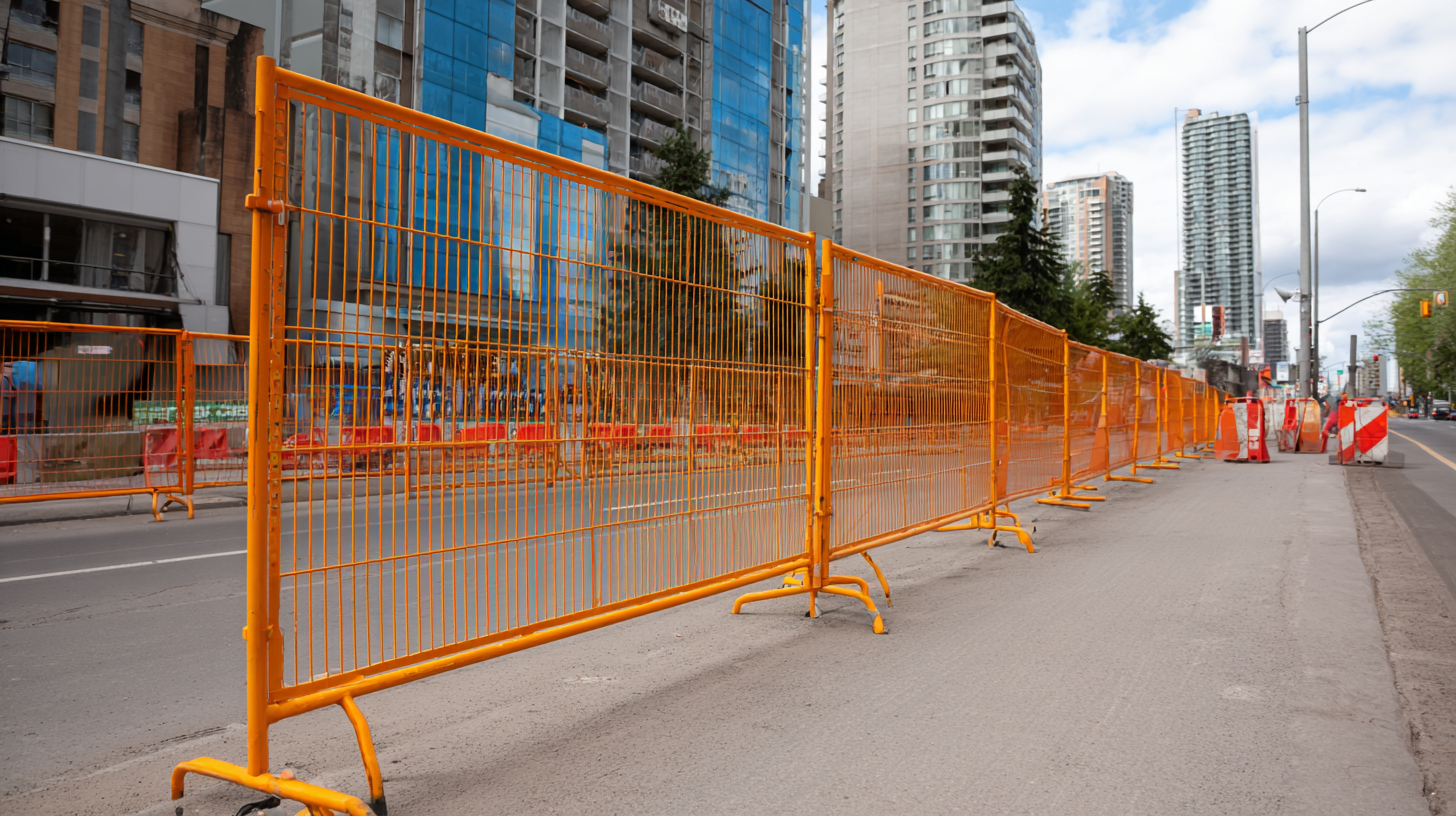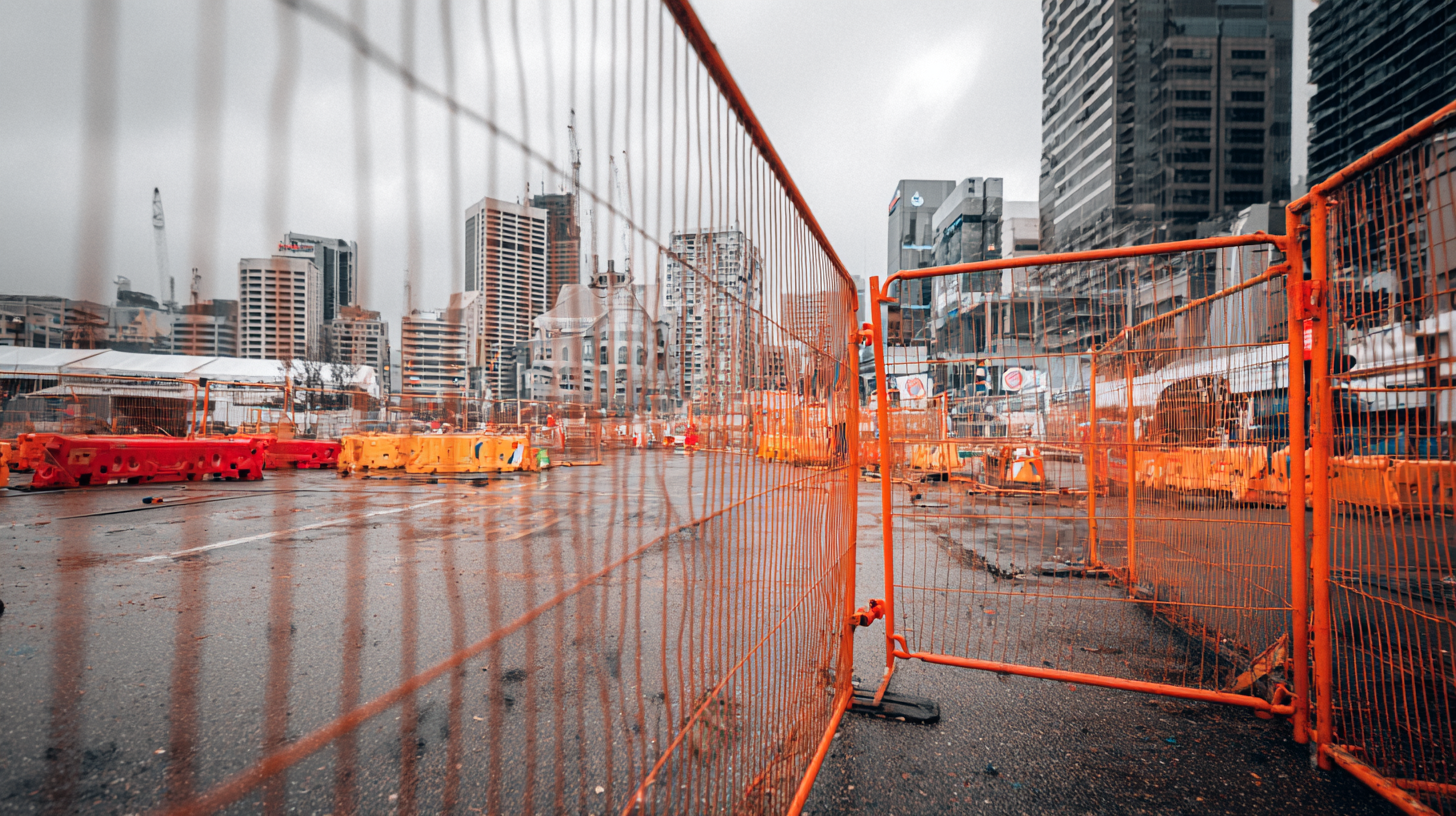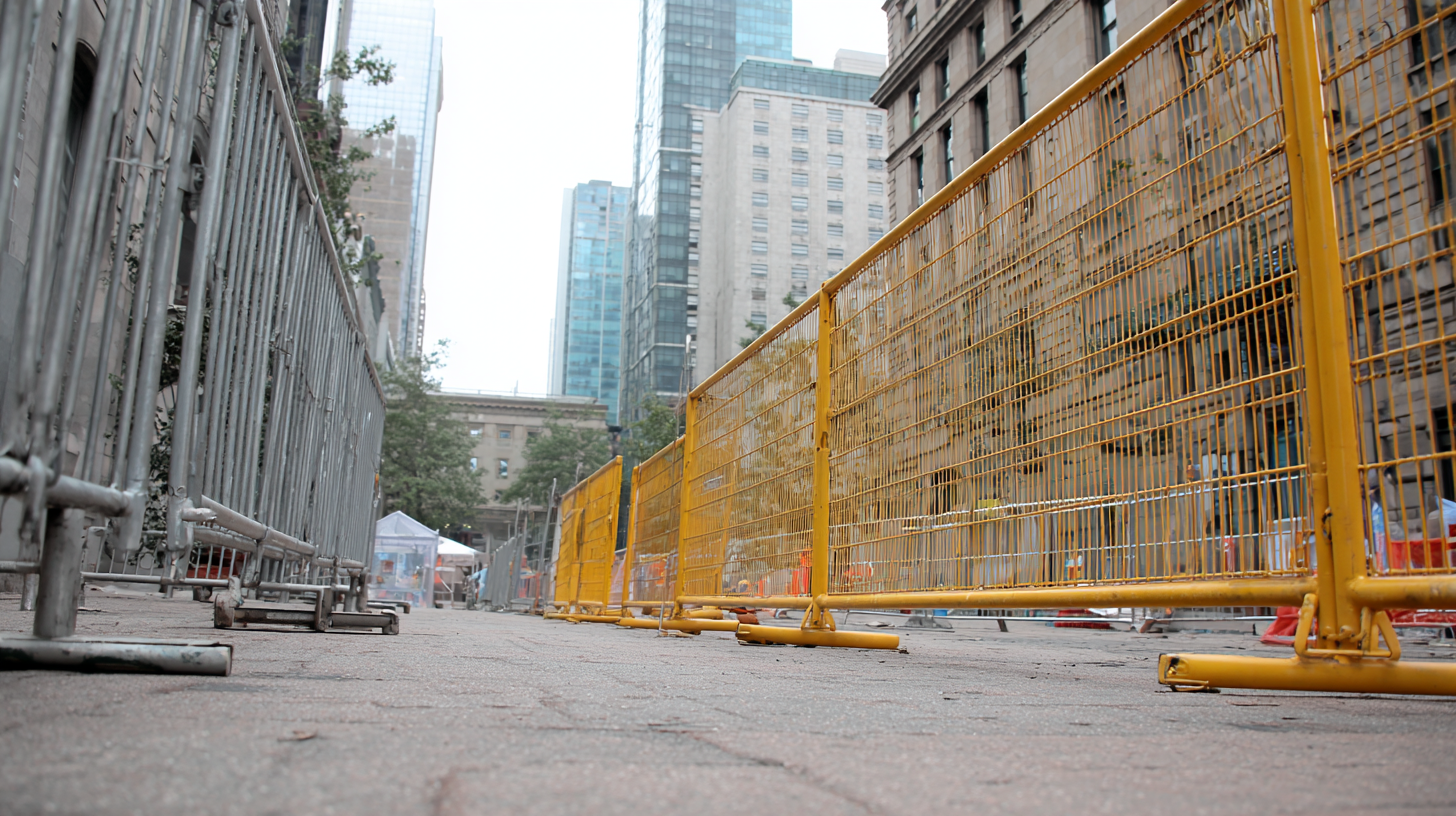Leave Your Message
-
Telephone
-
WeChat/ WhatsApp
-
Email
When embarking on a project that requires safety measures, choosing the right Temporary Safety Fence is crucial for ensuring both compliance and protection for workers and bystanders. Temporary Safety Fences serve as an essential boundary, preventing unauthorized access to hazardous areas while promoting a secure working environment. With various types, materials, and features available, the selection process can seem overwhelming. This tutorial aims to simplify your decision-making by outlining key considerations for selecting the best Temporary Safety Fence tailored to your specific project needs. Whether you're overseeing construction, hosting an event, or managing an outdoor project, understanding how to evaluate and choose the right fencing solution will help safeguard not only the site but also its occupants.

Join us as we explore the critical factors that will aid you in making an informed decision and ultimately enhance the safety and efficiency of your project.
When selecting a temporary safety fence, it is essential to identify the specific requirements of your project. First, consider the type of site you are working on. Different environments—construction zones, events, or hazardous areas—require distinct types of fencing to ensure safety and compliance. For example, a construction site may need sturdy fencing to deter unauthorized access, while a crowd control situation might benefit from a lightweight, easily movable barrier.
Tip: Assess the height and material of the fence based on your project's needs. For instance, higher fences can offer more security, while materials like mesh or chain link may provide visibility without compromising safety. Additionally, think about the length of the fence needed to secure your area appropriately.
Another critical aspect to consider is the duration of your project. If you need a long-term solution, investing in a more durable fence may be wise. Conversely, for short-term projects, a cost-effective, easy-to-install option can save both time and money.
Tip: Don’t forget to factor in local regulations, as some areas might have specific fencing requirements, especially in hazardous environments. Staying informed about these regulations can help avoid potential fines and ensure the safety of all individuals involved in the project.
When selecting a temporary safety fence for your project, it’s essential to consider several key features that enhance both security and functionality. Firstly, look for materials that offer durability and weather resistance. High-quality fencing often utilizes galvanized steel or heavy-duty plastic, providing stability against harsh environmental conditions. This durability ensures that the fence remains intact over time, offering reliable protection for your worksite.
Another important feature to consider is the ease of installation and mobility. A quality temporary safety fence should be designed for quick setup and takedown, allowing for seamless transitions between project phases. Options with interlocking panels or lightweight components can make the process more efficient, saving time and labor costs. Additionally, consider the fence's height and visibility; taller fences enhance security, while bright colors or reflective materials improve visibility, ensuring the safety of both workers and the public.
When selecting a temporary safety fence for your project, evaluating supplier reputation and customer reviews is crucial. According to a study by the Construction Industry Institute, nearly 70% of contractors prioritize supplier credibility as a key factor in procurement decisions. Positive customer experiences often translate into reliable products, as satisfied clients typically provide insights into the durability and effectiveness of the fencing materials. Platforms like Yelp and Google Reviews can serve as valuable resources, with data indicating that businesses with a 4-star rating or higher have a significantly higher likelihood of securing repeat customers.

Moreover, industry reports highlight that seeking recommendations from trusted peers or engaging in forums can provide further assurance of a supplier’s reputation. A survey conducted by the American Fence Association revealed that over 60% of respondents who assessed suppliers based on peer feedback reported increased confidence in their purchasing decisions. By mining customer reviews and understanding supplier performance, you can make informed choices that align with your project’s safety requirements and overall goals.
When selecting a temporary safety fence for your project, understanding the material options available is crucial for ensuring it meets your specific needs. Commonly used materials include polyethylene, chain link, and wood.
Polyethylene fences are lightweight and easy to install, making them ideal for short-term projects where mobility and quick setup are required. Their bright colors also enhance visibility, which is essential for safety in busy construction areas.
On the other hand, chain link fences offer durability and security, suitable for longer-term projects or sites that require perimeter protection. They provide a good balance between strength and visibility, allowing passersby to see the progress while keeping unauthorized individuals out.
Lastly, wooden fences, though typically heavier and more permanent, can be an attractive option for environments where aesthetics are important. Understanding the benefits and limitations of each material will help you choose the best temporary safety fence that aligns with your project's requirements and ensures a safe working environment.
When selecting a temporary safety fence for your project, budgeting is a critical step that directly impacts the effectiveness and compliance of your safety measures. Understanding the cost considerations involves assessing both initial expenses and potential long-term savings. A well-chosen temporary safety fence not only meets legal requirements but also minimizes the risk of accidents, thereby reducing potential healthcare costs associated with workplace injuries. For example, investing in durable fencing materials can lead to lower maintenance costs and a decreased need for replacements over time.

It's also important to factor in additional costs like installation, removal, and any necessary permits when budgeting for a temporary safety fence. In an environment where resources might be strained, much like the implications outlined in recent news about social programs and spending cuts, careful financial planning becomes paramount. Strategic allocation of funds can ensure that the safety measures implemented align with overall project goals while safeguarding the well-being of workers. By prioritizing safety within your budget, you're ultimately creating a healthier, more productive work environment.


